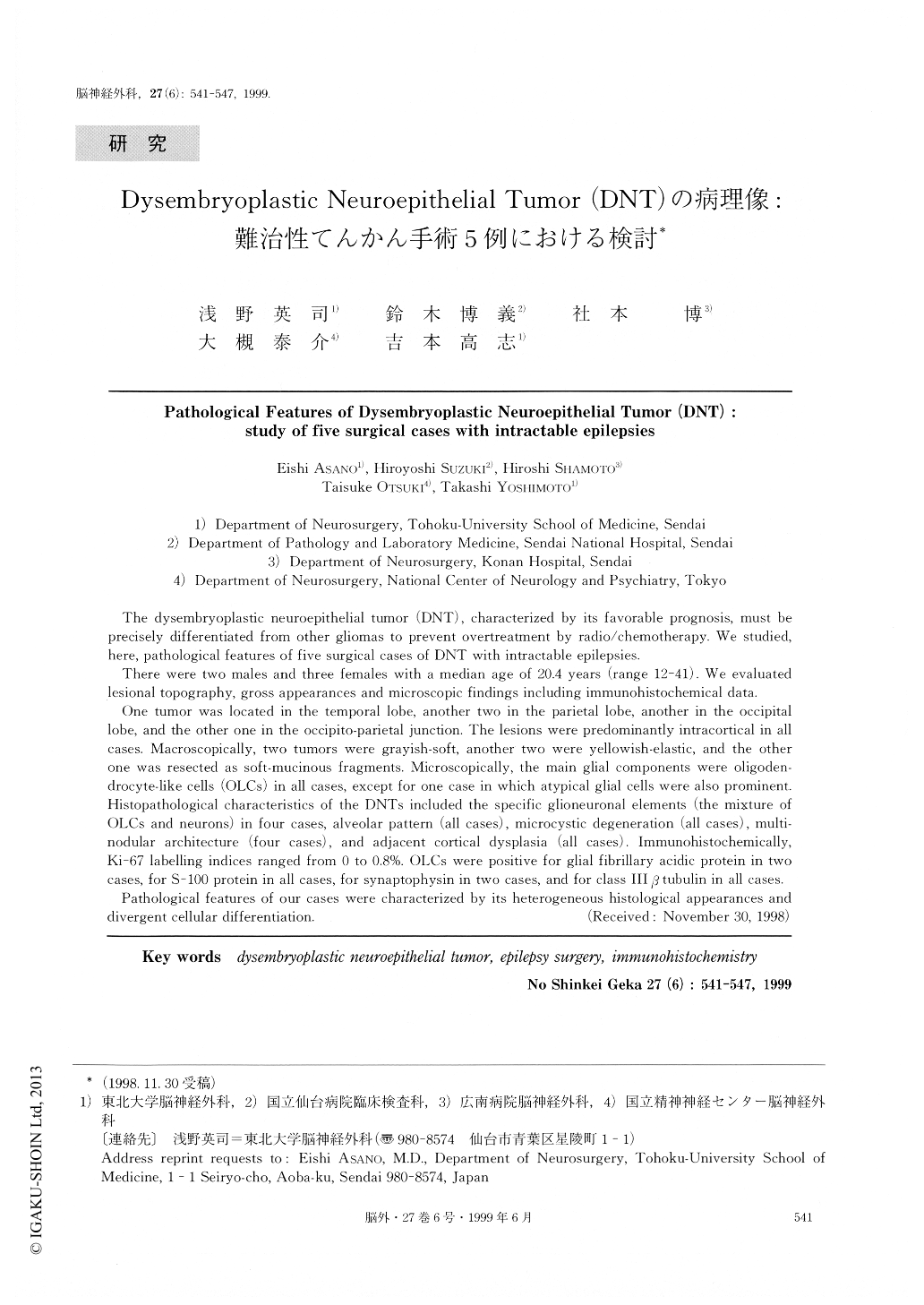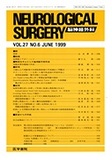Japanese
English
- 有料閲覧
- Abstract 文献概要
- 1ページ目 Look Inside
I.はじめに
Dysembryoplastic Neuroepithelial Tumor(DNT)は,1988年にDaumas-Duportが新しい臨床病理学的見地から定義した胎生期発達異常を基盤とする良性脳腫瘍である4).
臨床的には,若年発症の難治てんかん患者の大脳皮質に好発し,手術により良好な発作予後が期待できるとされている.DNTは放射線化学療法を不要とするため,他のグリオーマとの鑑別は必須と考えられている4,11).
The dysembryoplastic neuroepithelial tumor (DNT), characterized by its favorable prognosis, must beprecisely differentiated from other gliomas to prevent overtreatment by radio/chemotherapy. We studied,here, pathological features of five surgical cases of DNT with intractable epilepsies.
There were two males and three females with a median age of 20.4 years (range 12-41). We evaluatedlesional topography, gross appearances and microscopic findings including immunohistochemical data.
One tumor was located in the temporal lobe, another two in the parietal lobe, another in the occipitallobe, and the other one in the occipito-parietal junction. The lesions were predominantly intracortical in allcases. Macroscopically, two tumors were grayish-soft, another two were yellowish-elastic, and the otherone was resected as soft-mucinous fragments. Microscopically, the main glial components were oligoden-drocyte-like cells (OLCs) in all cases, except for one case in which atypical glial cells were also prominent.Histopathological characteristics of the DNTs included the specific glioneuronal elements (the mixture ofOLCs and neurons) in four cases, alveolar pattern (all cases), microcystic degeneration (all cases), multi-nodular architecture (four cases), and adjacent cortical dysplasia (all cases). Immunohistochemically,Ki-67 labelling indices ranged from 0 to 0.8%. OLCs were positive for glial fibrillary acidic protein in two cases, for S-100 protein in all cases, for synaptophysin in two cases, and for class III β tubulin in all cases. Pathological features of our cases were characterized by its heterogeneous histological appearances anddivergent cellular differentiation.

Copyright © 1999, Igaku-Shoin Ltd. All rights reserved.


